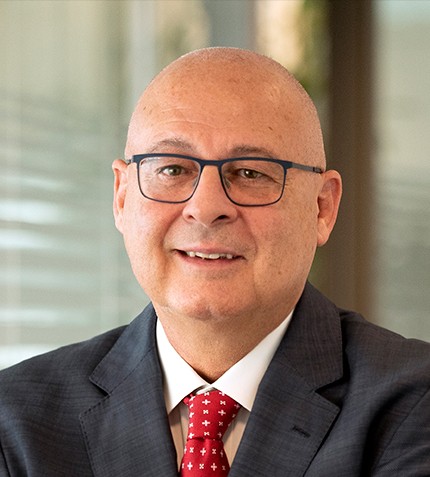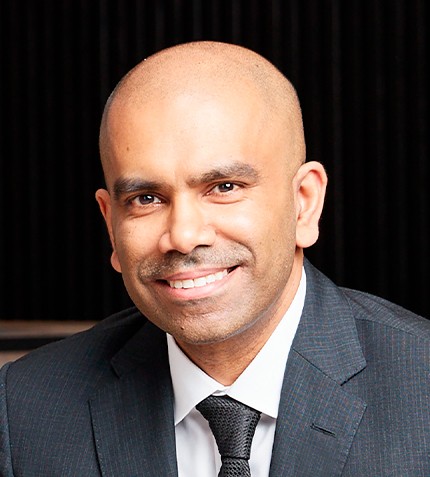
"More work needs to be done to scale and commercialize carbon sequestration, and we lend our carbon capture and storage expertise in various ways including research."
RELATED PUBLICATION
Geraldine Chin
CHAIRMAN AND MANAGING DIRECTOR, EXXONMOBIL ASIA PACIFIC PTE. LTD.
Can you give an overview of ExxonMobil’s presence in Singapore?
ExxonMobil’s presence in Singapore began more than 125 years ago, starting with the selling of kerosene in a store in Robertson Quay. Today, Singapore is home to the company’s largest integrated refining and petrochemical complex, with US$17 billion (S$25 billion) in fixed asset investments here. 2021 marks the 20th year since we started up our first cracker on Jurong Island. We have since expanded our petrochemical complex to include units that make specialty products with better performance and properties, while continuously improving manufacturing operations. We have about 4,000 employees in Singapore, which is also the Asia Pacific headquarters for our downstream, chemicals and LNG businesses.
How would you comment on the attractiveness and competitiveness of Singapore as a petrochemical hub?
Singapore is known for its high standards of governance and a stable business and political environment. It also has quality talent and good infrastructure. While new plants and petrochemical facilities are being built around the world, this can also be seen as a positive development as it reflects an overall growing demand for petrochemical products.
Could you share the measures ExxonMobil takes in reducing energy use?
In ExxonMobil’s Outlook for Energy, it is anticipated that by 2040, global GDP is expected to almost double, while energy use grows by 20%; and energy efficiency gains are a key contributing factor to this.
In Singapore, ExxonMobil operates three co-generation plants at our integrated manufacturing complex that generate over 440 MW of electricity; this can power approximately ¾ of a million four-room HDB flats. In recognition of our energy-efficiency efforts, we have received several accolades over the years at the annual Energy Efficiency National Partnership Awards in Singapore.
Beyond operations, the products that we make also help our customers reduce their energy use. For example, our lubricants help improve fuel efficiency in their end applications, while many of the high-performance petrochemical products we make require less material, or are light-weight and contribute towards greater fuel efficiency and lower emissions.
What is ExxonMobil’s role in CO2 capture and sequestration?
ExxonMobil believes that achieving meaningful reductions in greenhouse gas emissions will require a wide range of solutions, and carbon capture and storage (CCS) is one of the most vital technologies needed to mitigate the impacts of climate change.
According to third-party sources such as the United Nations Intergovernmental Panel on Climate Change (IPCC), CCS is one of the critical technologies required to achieve net zero emissions and the climate goals outlined in the Paris Agreement.
Since 1970, ExxonMobil has captured over 40% of anthropogenic carbon dioxide worldwide, and we are well-positioned to be the global leaders in this technology. Still, more work needs to be done to scale and commercialize carbon sequestration, and we lend our CCS expertise in various ways including research. ExxonMobil has been partnering universities around the world to support research and innovation. In Singapore, we are a founding member of the Singapore Energy Centre (SgEC), which is led by the National University of Singapore and the Nanyang Technological University. The SgEC aims to foster research collaboration and partnerships that lead to the development of scalable, globally relevant solutions to help address challenges in energy, climate change and sustainable development. Earlier this year, ExxonMobil announced that it is studying a CCS hub concept in Singapore to capture, transport and permanently store CO2 generated by industrial activity in the Asia-Pacific region.
How can the chemical sector promote greater gender diversity at a leadership level?
Given the nature of our business and operations, the majority of our recruits are from STEM-related disciplines, such as those from the engineering and science faculties. Greater female representation in management roles in the energy sector depends on more women choosing STEM courses. In this respect, I’m heartened that the ratio of female to male chemical engineering students has become more balanced compared to when I was in university.
At a corporate level, ExxonMobil seeks to support diversity and that includes the progress of women leaders. It has a longstanding ‘Women’s Interest Network’ in many countries we operate. It is a community and platform for women to engage and support one another, and it also has company leaders who serve as champions and sponsors, who help address potential issues that women may face. We continuously look at ways to empower all our employees and ensure that our culture reflects our principles of diversity and inclusion.











